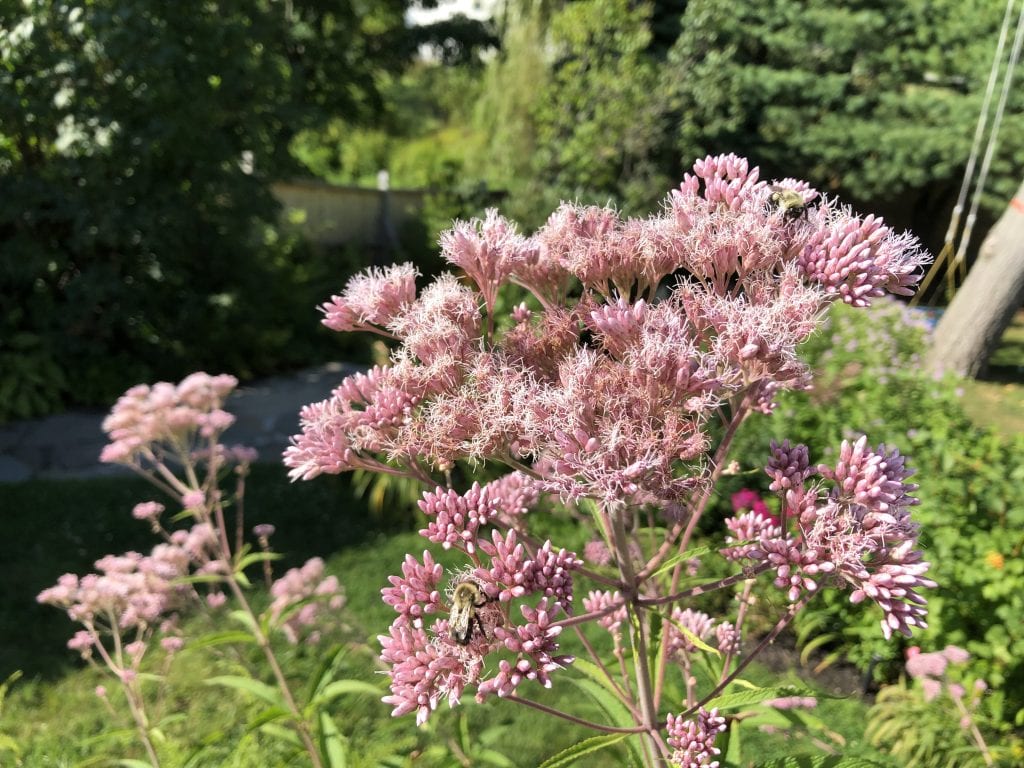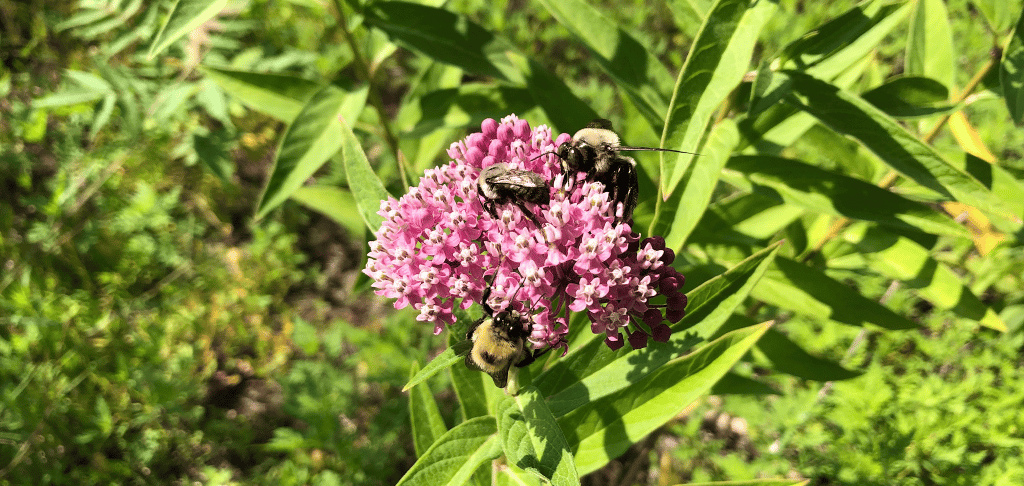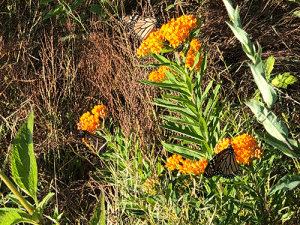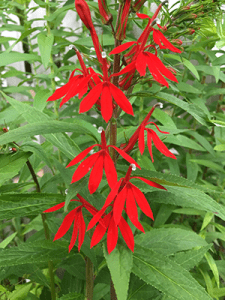
Maine Audubon Pilots Larger-Scale Growing of Native Plants from Seed
As we work to restore wildlife habitat throughout Maine, especially for breeding birds at this time of year, our developed landscapes — especially our gardens, yards, and parks — have tremendous potential for hosting insects. While butterflies and moths are still caterpillars, they are the primary source of food for huge numbers of baby birds. However, the landscapes around most people don’t produce nearly enough food for birds to breed there, even despite the large trees, blooming hydrangeas, and buzzing bees.
Like Monarchs and their special relationship with milkweeds, most butterflies and moths will only lay eggs on specific native plants. Surprisingly, many of these plants have become rare, especially in places where huge landscapes have been converted to exotic or even invasive plants such as lawn, pyramidal yews, Burning Bush, and English Privet. Most plant nurseries are filled with plants from different ecoregions, cultivars that have been genetically modified for traits humans prefer, and plants that have been treated with systemic pesticides and fertilizers. It is also increasingly difficult to find definitive information about the source of plants in our nurseries, meaning even the best-intentioned small local nursery may be getting plants that have changed hands (and growing/management practices) many times.

To address the gap, Maine Audubon started propagating plants from seed several years ago, and we have significantly scaled-up production and sales this year. Maine Audubon plans to sell seed-grown native wildflowers at the Gilsland Farm Nature Store through early October. We chose species that are beautiful, beneficial, hypoallergenic, and easy to grow, even in small areas. All are straight species native to Maine with significant historic record of hosting insects in areas where we live. All of the plants have been naturally-propagated from seed outdoors at Gilsland Farm, and raised entirely organically. The seeds came from Wild Seed Project and from plants Maine Audubon has grown.
While supplies last, the following are available:
Swamp milkweed — Asclepias incarnata — beautiful, non-spreading Monarch host. This is not the milkweed you see on highways, but is just as critical to Monarchs.

Butterflyweed — Asclepias tuberosa — resilient, striking, non-spreading Monarch host for tough sites, this species is potentially extirpated in Maine.
Wild Bee Balm — Monarda fistulosa — midsummer (just passing now) magnet for hummingbirds, bumblebees, and Monarchs.
Joe Pye Weed — Eupatorium maculatum — hardy, tall, beacons of pink flowers are butterfly favorite.
Early Goldenrod — Solidago juncea — this is a tall, few-stemmed, July bloomer will blend in well with other tall plants in a bed or field.
Blue-stemmed Goldenrod — Solidago caesia — this is a dainty woodland goldenrod that prefers some shade and cover in which to hide.
Zigzag Goldenrod — Solidago flexicaulus — this is a smaller, broad-leaved, sturdy goldenrod that won’t take over a site.
Smooth Blue Aster — Symphyotrichum laeve – beautiful and striking tall flower, late bloomer.

New England Aster – Symphyotrichum novae-angliae — the Tom Brady of wildflowers, this plant used to dominate New England fields and meadows the way Purple Loosestrife seems to now (albeit a bit later in summer).
Turtlehead — Chelone glabra — late blooming lowlands plant is excellent nectar source for hummers starting to think about migrating, and hugely entertaining to watch bumblebees on.
Foxglove Beardtongue — Penstemon digitalis — early blooming (June) favorite of hummingbirds and bumblebees
Cardinal Flower — Lobelia cardinalis — hummingbird favorite for wet, sunny locations
Great Blue Lobelia – Lobelia siphilitica — this is a great lobelia, and is endangered in Maine
